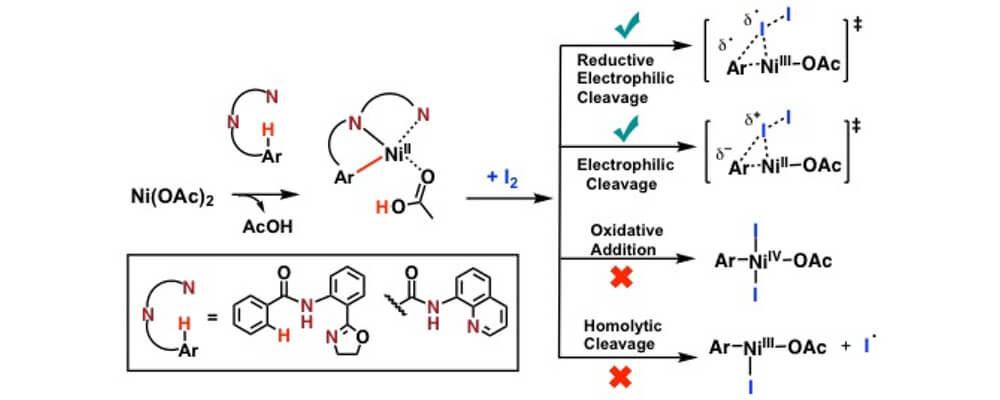The mechanism of directed Ni(II)-catalyzed C–H iodination with molecular iodine
Brandon E. Haines, Jin-Quan Yu and Djamaladdin G. Musaev
Chemical Science,
2018, 9, 1144-1154; DOI:10.1039/C7SC04604A

01/2018
The elementary steps of the Ni(II)-catalyzed C(sp2)–H iodination by I2 with substrates bearing N,N-bidentate directing centers, amide-oxazoline (AO) and 8-aminoquinoline (AQ) were studied. Two-state reactivity for these systems is reported, where the reaction is initiated on the triplet surface and generates a high energy singlet nickelacycle. It is shown that the addition of Na2CO3 base to the reaction mixture facilitates C–H activation.
The presence of I2 in the reaction provides much needed driving force for the C–H activation and nickelacycle formation, and ultimately reacts to form a new C–I bond through either a redox neutral electrophilic cleavage (EC) pathway or one-electron reductive cleavage (REC) pathway. The previously proposed Ni(II)/Ni(IV) and homolytic cleavage pathways are found to be higher in energy. The nature of substrate is found to have a large impact on the relative stability of the lowest electronic states, and on the stability of the nickelacycle resulting from C–H activation.